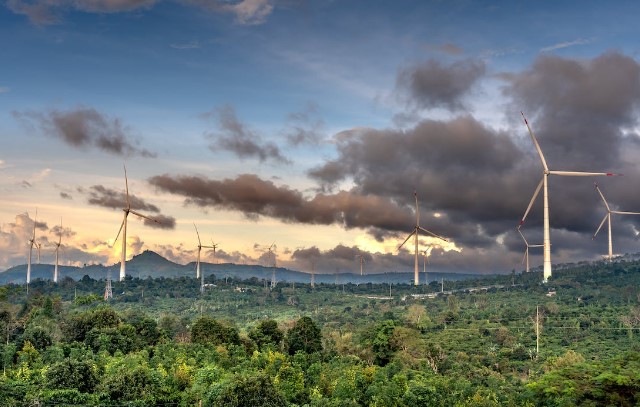How Rotting Vegetables Make Electricity – Ten tons of food goes unsold every day at this market. But instead of going to a landfill, it’s turned into electricity that will power streetlights, buildings, and a kitchen that preps meals for 800 people. This is called biogas. It’s plentiful, it’s low-tech, and experts say it burns cleaner than any fossil fuel.
So why can’t we make energy from the 1.3 billion tons of food that gets thrown out every year? We visited the Bowenpally market in Hyderabad, India, to find out. The first step is to chop up larger vegetables and load them onto a conveyor belt. Some of the vegetables are spoiled. Others are thrown away because it costs farmers too much to transport them back home.
The conveyor belt carries the material to a shredder, which further breaks down the food into smaller, more uniform particles. In a single day, it handles the same amount of vegetables that 150 Indians eat in a year. A grinder crushes the mixture into pulp, which is pumped through underground tanks and into two digesters.
So anaerobic digesters basically have bacteria which are bred in the absence of oxygen, anaerobic bacteria. And they actually eat, essentially, the food waste that we are putting in there and give out methane and carbon dioxide. Any organic materials emit these planet-warming gases as they decompose.
But the massive amount of food waste makes landfills the third largest source of human-caused methane emissions, just behind fossil fuels and agriculture. Burning biogas to make electricity is a way to harvest those gases before they enter the atmosphere. At Bowenpally, the fuel can be stored locally in four huge balloons until it’s ready to use.
And it goes all the way to the kitchen, which is about roughly 400, 500 meters away from here. It’s enough power to run a canteen kitchen that that serves roughly 800 meals per day. Aside from energy, the plant creates another valuable byproduct: fertilizer. Farmers who sell their wares at the market buy it back and spread it on the same fields where their vegetables grow.
By using this fertilizer, their soils are also getting better. Their crops yields are better, and the crops are being sold at a higher cost because organic vegetables are now very costly nowadays, organic rice and all these things. Dr. Rao, a scientist on the project, is already building five more plants around the city.
And it isn’t limited to vegetables. Biogas can be produced from any organic material, including animal, and human, feces. So if biogas can be locally sourced, cuts down on solid waste, and reduces emissions, why aren’t we all doing this? Because in most countries, it’s still cheaper to keep burning fossil fuels.
In North America, biogas costs nearly five times more than natural gas. Now, you can’t compete with what you call gas in the United States if it’s 20 cents a gallon. This gap is smaller in places like Asia, where the difference in price is less than $2 per unit. A lot of people, a lot of state governments who were thinking about setting up these projects have suddenly understood that yes, it’s possible to do it, yes, there are technologies which are indigenous, which are built in India, that can work for them.
The world’s biggest biogas plant was recently built in Denmark, and new facilities are being built elsewhere in Europe and Africa. An Israeli company sells a product to make biogas in your backyard. Biogas will never replace natural gas. There’s just not enough waste to keep up with the demand for electricity.
But it does something that natural gas can’t: It helps reduce landfill waste. And it’s a huge missed opportunity in the United States, which throws out between 30% and 40% of all food. Even the farmers who lose money when they can’t sell their produce believe biogas is better than just throwing it away.
And the engineers on the Bowenpally project are hopeful that its success will inspire others. These projects have to happen for us to make life more sustainable, not just for ourselves, but for, let’s say even 20 years or 10 years down the line, the scenario needs to be a little better.
